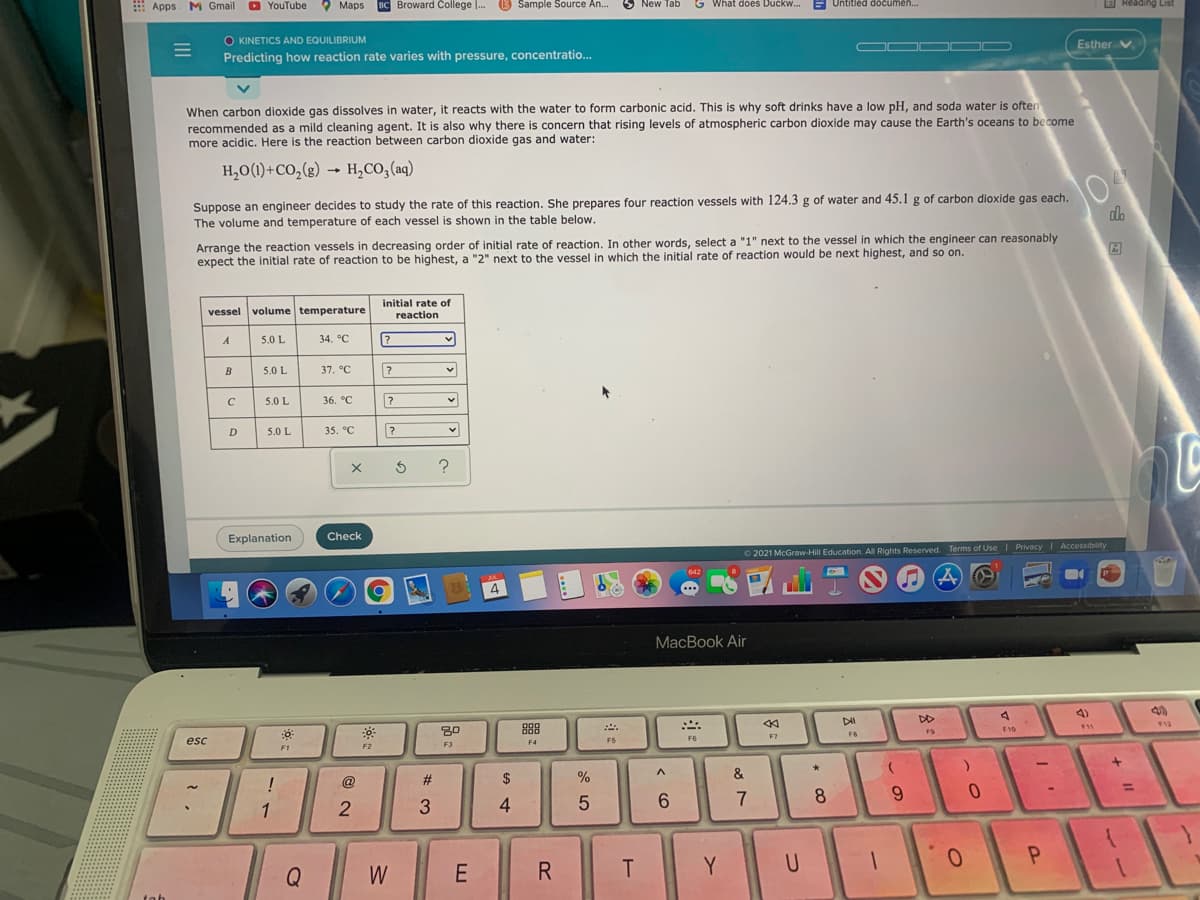When carbon dioxide gas dissolves in water, it reacts with the water to form carbonic acid. This is why soft drinks have a low pH, and soda water is often recommended as a mild cleaning agent. It is also why there is concern that rising levels of atmospheric carbon dioxide may cause the Earth's oceans to become more acidic. Here is the reaction between carbon dioxide gas and water: H,0(1)+CO,(g) → H,CO,(aq) Suppose an engineer decides to study the rate of this reaction. She prepares four reaction vessels with 124.3 g of water and 45.1 g of carbon dioxide gas each. The volume and temperature of each vessel is shown in the table below. Arrange the reaction vessels in decreasing order of initial rate of reaction. In other words, select a "1" next to the vessel in which the engineer can reasonably expect the initial rate of reaction to be highest, a "2" next to the vessel in which the initial rate of reaction would be next highest, and so on. volume temperature initial rate of reaction vessel 5.0 L 34. "C B 5.0 L 37. C 5.0 L 36. °C D 5.0 L 35. °C
Ionic Equilibrium
Chemical equilibrium and ionic equilibrium are two major concepts in chemistry. Ionic equilibrium deals with the equilibrium involved in an ionization process while chemical equilibrium deals with the equilibrium during a chemical change. Ionic equilibrium is established between the ions and unionized species in a system. Understanding the concept of ionic equilibrium is very important to answer the questions related to certain chemical reactions in chemistry.
Arrhenius Acid
Arrhenius acid act as a good electrolyte as it dissociates to its respective ions in the aqueous solutions. Keeping it similar to the general acid properties, Arrhenius acid also neutralizes bases and turns litmus paper into red.
Bronsted Lowry Base In Inorganic Chemistry
Bronsted-Lowry base in inorganic chemistry is any chemical substance that can accept a proton from the other chemical substance it is reacting with.

Trending now
This is a popular solution!
Step by step
Solved in 4 steps with 3 images









